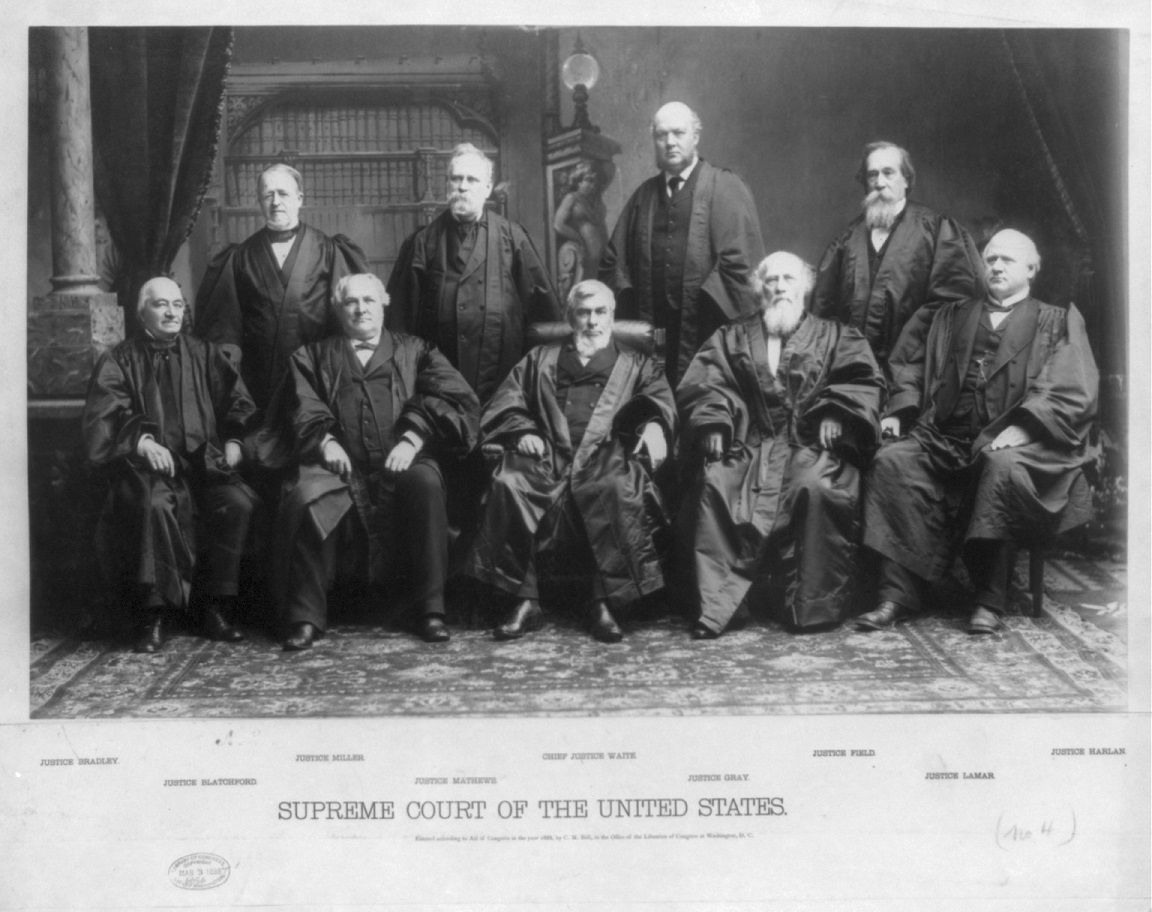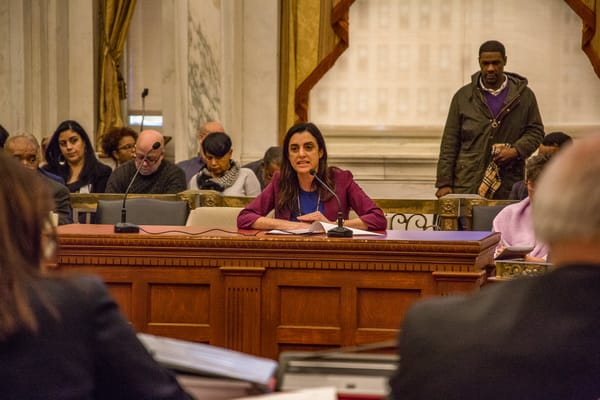Fix the Amendment Process to Fix the Court

The long expected death of Ruth Bader Ginsburg so soon before the election has all but guaranteed a 6-3 conservative supermajority on the nation’s highest court. The bitter, divisive, unforgiving politics of Supreme Court appointments has kicked into high gear once again. Just four years ago, a Republican Senate majority, who represented a minority of the country, denied President Obama the opportunity to appoint a justice for the entire last year he was in office. They then went on to appoint two Supreme Court justices and over two hundred other federal judges, all nominated by a president who won with fewer votes than his opponent. This situation is clearly at odds with the democratic values held by most Americans.
But liberals shouldn’t echo 20th century conservatives with their cries of “unelected judges.” Liberalism incorporates many values; the commitment to electoral mechanisms for holding officials accountable to an effectively universally enfranchised citizenry is non-negotiable, but it does not stand alone as a bulwark against tyranny. Something too often lost in the “unelected judges” discussion is that America has elected judges; in fact, more elected judges than just about anywhere in the developed world. Thirty-nine states have elected judges, and because of the enormity of systems like California’s, eighty-seven percent of all state judges are elected. But the outcome is not one a liberal ought to smile upon. While it is difficult to prove that the high proportion of elected judges in our country is tied to our unique mass incarceration problem, there is some evidence of a connection. Perhaps more convincing is the clear relationship between the independent prosecutors and judges in countries like France and Germany and the more humane character of their criminal justice systems compared to the U.S.
The systems of government that do a halfway decent job at deploying the minimal necessary coercion to protect the vulnerable and minimize cruelty all have components with a measure of independence from the results of elections. One does not have to be as naive as the Progressives of the early 20th century—who really thought you could create an apolitical, technocratic, administrative state—to see that successful liberal democracies around the world rely on a mixture of electoral accountability and civil service independence.
Finding the right balance across institutions is a challenge in the best of times, never mind when beliefs on the matter are sharply polarized along party lines. For the time being, the best we can probably hope for is that the threat of kicking off a Court-packing arms race will bring both sides to the table to discuss the possibility of real reform, perhaps even an amendment. But it is worth it to more seriously contemplate what the best arrangement would be from a practical as well as principled standpoint. Though we shouldn’t expect that more serious structural reforms will be considered—never mind that it would result in an actual ratified amendment or amendments—there is some value in being prepared, should an opportunity present itself.
The law as dialogue
Where statutory law is concerned, there is little reason to be concerned about judicial interpretation from a democratic point of view. Judges determine how statutes apply to cases. They create case law by issuing judicial opinions in which they explain the rationale for their ruling. The Supreme Court stands at the top of the judicial hierarchy and cannot be overruled. But in the case of statutory law, its power is in fact limited. Should enough members of Congress oppose the way the Court has interpreted a statute, they can update the language of the statute. This is what a healthy relationship between an independent court and an elected legislature should look like.
In the U.S., this kind of relationship is impossible with respect to constitutional law. The hierarchical nature of our law means that when a majority of the Court sees a conflict between constitutional law and state or federal statutes in a particular case, and rules accordingly, those statutes cease to have the force of law. But Congress cannot credibly update the constitutional text the way it can update a statute. The problem is not that it requires supermajorities; rather, the problem is with the specific institutional form the supermajorities must take. Getting two-thirds of both houses of Congress to update the Constitution is not too tall an order; Germany’s equivalent institutions have managed to do so sixty-two times since 1949. The problem is requiring three-fourths of the states to ratify. That is an extremely high threshold and it practically invites most states to never bother putting the amendment to a vote at all.
As a result, our Constitution has only been amended twenty-seven times, most of which occurred under unusual circumstances. The first twelve occurred very early on, when the total number of states and enfranchised citizens was quite small. The following three occurred while eleven states were under military occupation. Many of the early 20th century amendments were enabled by the severe restrictions on voting which occurred in the south and elsewhere. This leaves us with a handful of amendments that passed under conditions remotely similar to contemporary ones, and many of those, like the Twenty-Fifth Amendment, were highly procedural in a way that did not obviously conflict with any powerful interest.
So instead of the healthy two-way relationship between elected legislators and independent courts that we see most often in the realm of statutory law, there is an entirely one-way relationship in constitutional law. The Supreme Court invalidates statutes and it takes an enormous supermajority of all the legislatures in the country in order to make such statutes viable again. Tremendous resources are expended by interest groups to find useful cases to marshall through the court system so that they might have a chance to persuade five individuals to invalidate particular statutes, and it is worth the price because everyone knows that the Court has a free hand to influence the character of American law, unlike any other legal institution.
From this perspective, if the current battle over the Court does bring both parties to the table to discuss a more permanent reform, an amendment to fix the amendment process might be the most valuable single change. Removing the state ratification component alone may be enough to create a better relationship between the elected branches and the Court, turning the current monologue from unelected judges into a fruitful dialogue. But even if the current strife doesn’t result in any process-modifying amendment being passed, it lowers the barrier to try future reforms, such as the more widely discussed option of judicial term limits.
Vocation
The exact purpose of putting officials or laws to a popular vote is itself hotly contested. For some, it is to make sure that political leaders and laws reflect the desires of their constituents. The existence of unelected officials at all, or even of legislators themselves rather than simply allowing any citizen to propose any law for everyone to vote on, is in obvious tension with the belief that the government ought to provide as unmediated expression of the popular will as possible.
Closely related to this is the hostility toward the very idea of professional politicians. This is held more often by conservatives in our country than liberals, but the core instincts are similarly democratic: we don’t want to foster classes of rulers and the ruled, we want the people to govern themselves. As a result, many states do not pay a full time salary to members of their legislatures; New Hampshire only pays $200 per term. The ideal is the citizen-legislator, who perhaps does their stint out of a sense of duty and then moves on, making way for others.
I reject both of these as viable democratic ideals. Government does not exist to satisfy preferences, and good governance requires professionals doing their job well. The many state governments that underfund their legislatures in terms of salaries and especially in terms of staff are much more vulnerable to capture by interest groups who will do the policy research and write the bills themselves. The open primary system that we have in most states is also easily influenced by fairly small networks of actors due to their low turnout. In general, it is accepted wisdom among political scientists that there is an inverse relationship between the strength of party organizations and the strength of interest groups.
In terms of elected officials, then, our goal should be to foster strong formal party organizations made up of professional politicians who seek to enact good laws and govern well. “Good” and “well” are not neutral, technocratic terms, but—whatever the specific values and visions inform them—they do require administrative and technocratic competence to execute. Professional politicians do not have those competences personally, and we should not fool ourselves into thinking otherwise, but they can have access to those competences in the form of well-resourced staff for their office, committees, and branch—like the old Office of Technology Assessment in Congress. Yet even if the typical professional politician lacks the administrative and technocratic competence to execute good laws and govern well, this is even more the case for the typical voter, who has no staff at all. This is why ballot initiatives and similar tools are a bad idea, and the legislative and constitutional history of states like California testifies to this fact.
The role of professional politicians is to be the point of accountability for citizens. They do not need to be mirrors for the preferences of citizens; indeed I would argue they should not be, and that selling good ideas to a potentially skeptical public is an important duty. But under a regime of effectively universal enfranchisement—that is, universal enfranchisement without voter suppression tactics—elections exist to ensure that professional politicians must take the interests and values of citizens into account. If this electoral mechanism is somehow weakened, as in the case of the six year Senator terms, or the franchise is restricted, then segments of the population will be left with few tools to stop the government from steamrolling their interests and their values.
There is a traditional fear in American politics of the “tyranny of the majority,” and we certainly have a long history of the majority demographic using its political power to exclude and marginalize various minorities, especially African Americans. But the people who fear a tyrannical majority often hold up our “countermajoritarian” institutions as bulwarks, yet in reality they have performed this function quite poorly. The better approach to give minorities a stronger voice in our system is to make the legislatures as representative as possible—ideally through a proportional representation system, but also by fighting voter suppression—and then require supermajority votes for key categories of legislative action. Constitutional amendments are an important example of this. In the normal case, a party or coalition that controls the majority of votes can choose to ignore the other legislators most of the time. But if a few valuable votes require supermajorities, the legislators outside of the governing coalition can threaten to withhold their votes on those should they not get their way on at least some of the votes that require only majorities. This reduces the odds that legislators whose constituencies include large vulnerable populations will be shut out of governing entirely.
I hope the relevance of this framework to the Court battle is clear. In general, strong and independent courts are better than elective ones for the rule of law as well as for reducing the punitiveness of the system. Problems arise when courts gain the unilateral ability to strike down statutes with no practical means for the elected branches to respond. In an ideal scenario, a class of professional politicians with a well-resourced staff, held accountable by an enfranchised citizenry and grouped into strong formal party organizations, have the means to update statutory and constitutional texts when courts interpret the existing texts in a manner inconsistent with good law and good governance.
Featured Image is Supreme Court of the United States, from the Library of Congress




